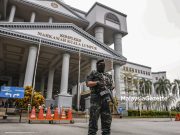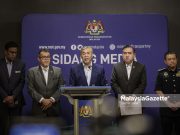Major trade supply chains stand disrupted with conflicts that continue to persist around the world. Economies of developing states, in particular, have been affected with unabated increase in the cost of base commodities and the associated cost of living. Turmoil and uncertainty are what best describe the situation today as the world transforms from a unipolar regime to that of a multipolar one.
As we navigate through this evolving world order, the term “strategic autonomy” begins to resonate even more. It is where the State adopts a neutral, or a relatively ambiguous, stance in the world order and proceeds to transact on global trade in the best interest of its individual constituents. This too has begun to prove to be tenuous, especially for smaller developing economies with the threat of looming economic sanctions imposed by larger players.
According to the Association of Southeast Asian Nations (ASEAN) Development Outlook, the total combined gross domestic product (GDP) of ASEAN, a regional grouping of 10 Southeast Asian nations, is effectively the fifth-largest economy in the world, valued at $3.6 trillion, and is set to grow into the fourth largest by 2030. ASEAN offers a wealth of raw commodities and human capital which is close to 700 million in size. Geographically, its constituent states straddle two of the most significant global trade routes, that of the South China Sea and the Indian Ocean.
On the eastern front, the South China Sea, a body of water over three million square kilometres in area, is ringed by several ASEAN States, China and Taiwan. While it is a vital shipping route carrying trillions of dollars in cargo that acts as a gateway to the Indian Ocean, it is also rich in oil, gas deposits and thriving marine life that is a prime food source for a growing East-Asian population. The economic sphere in Asia-Pacific is undoubtedly dominated by China through the Regional Comprehensive Economic Partnership (RCEP), the world’s largest trading bloc comprised of 15 Asia-Pacific countries established in 2022 as an economic alternative to the US-led Comprehensive and Progressive Agreement for Trans-Pacific Partnership (CPTPP). China is, by far, ASEAN’s largest trading partner with over $447.3 billion in two-way trade.
And on the western front, several ASEAN states border the Indian Ocean. This is a body that stretches from Africa’s east coast to Australia’s western coast and is home to 33 nations and over 36% of the total global population at 2.9 billion people. Annual trade plying across this region stands at over $6.17 trillion (in 2020 and this figure could well be over $7 trillion in 2023 – Carnegie Endowment for International Peace) with over 80% of the world’s maritime oil and close to 10 billion metric tons of cargo ranging from food, precious metals and manufactured goods. The Indian Ocean region is also critical for the global movement of liquid energy with about 65% of the world’s oil reserves belonging to ten of the Indian Ocean’s littoral states. Unmistakably, this region sees the flow of close to half the global trade, which stands at around $14 trillion.
While ASEAN is located on the cusp of these two colossal trade routes, it also forms a central part of the total Asian economic community. While not currently a formal economic trading bloc, the Asian GDP value stands at $ 42.7 trillion (data by International Monetary Fund), which is in itself a sizeable trade opportunity that is not to be underrated.
In addition, with Malaysia and Thailand expressing their individual desires to participate in the fast-evolving BRICS (economic grouping of Brazil, Russia, India, China and South Africa), it adds an extended dimension to trade possibilities. BRICS, originally formed as an alternative economic alliance in 2006 and further formalised in 2010, with the entry of South Africa, had recently announced the participation of Egypt, Ethiopia, Iran, United Arab Emirates (UAE) and Saudi Arabia. The possible collaboration or formal entry of ASEAN a comprehensive economic bloc into this fast-expanding grouping would certainly add to trade and security possibilities.
While Malaysia continues to be a close trading partner to the US and European Union, it also must continue its strategic trade relationship with China given that a very significant portion of Malaysia’s base commodities like food products and other essential goods are primarily sourced and imported from there. As a result, Malaysia is exposed to a trade deficit of over $22.8 billion with China.
However, Malaysia which is uniquely positioned, both on the Indian Oceanic route as well as the South China Sea. Malaysia clearly needs a balanced foreign and trade policy that leverages other strategic neighbours. For instance, India, with its geographic proximity to Malaysia is definitely a prime partner that could be further leveraged with an existing trade balance at $4.77 billion in Malaysia’s favour. India as the second largest food producing country offers Malaysia added possibilities for food security and other technological possibilities.
Furthermore, in this current geopolitical and geo economic environment, India and China are in the midst of redefining their trade and security relationship. As asserted by the vice chairman of NITI Aayog, “It is not easy to cut the Indian economy off from that of the Chinese economy. There needs to be more clarity to India’s relationship with China as it remains an important trading partner for India”.
This may offer Malaysia an interesting opportunity to help bridge this partnership. Malaysia has a unique geopolitical significance to both India and China as super-economies. It has civilisational linkages to both India and China that goes back many centuries in addition to current people-to-people relationships amongst its diaspora that claims ancestral lineage from both these nations. In addition, it has a one-of-a-kind strategic positioning, both on the Straits of Melaka, which is the entry point to the Indian Ocean Trade Route, and directly on the South China Sea. Furthermore, Malaysia also forms part of the trans-Asia rail network.
As the ASEAN chair for 2025, Malaysia certainly could play a crucial role in expanding trade and security-of-supply relationships within the region. In addition, Malaysia could play a more strategic role in exploring broader partnerships between ASEAN and other emerging economic blocs like the BRICS, thus creating a more balanced and secure trading environment in the Indio-Asiatic region.
The question is; while acknowledging and reasserting its strategic geopolitical positioning, could Malaysia prove to be the fulcrum that helps craft an ASEAN-India-China relationship that fortuitously reaches greater heights in 2025 and beyond?
— This article is authored by Ravindran Devagunam, senior correspondent, foreign policy and politics, Malaysia Gazette.

















